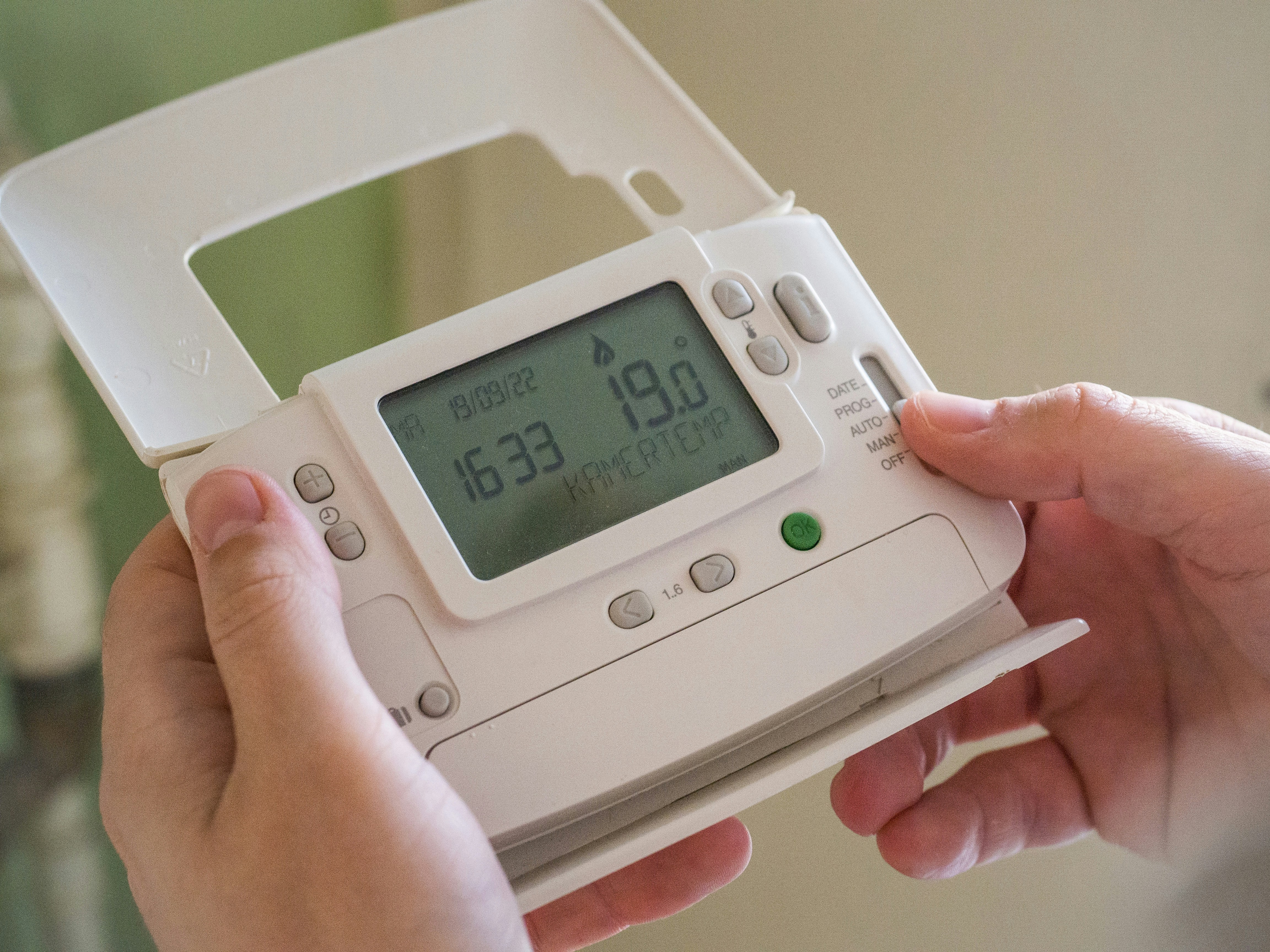
As the drive towards decarbonisation intensifies, the social housing sector’s ability to collect, store and manage vast amounts of data becomes increasingly critical. With a shared goal of creating warmer, carbon-free homes, housing associations’ strategic use of data is essential for successful planning, execution, and evaluation of retrofit projects.
A recent webinar hosted by Unlock NetZero brought social housing and data industry experts together to share insights into data management in the housing sector.
Making the most of computer power
Geoff Parkinson, Director of Procurement at Fortem highlighted the complexity of retrofitting social housing, which often involves dealing with properties built before modern building regulations.
Before, during and after the retrofit process, vast quantities of data are collected. Some of this is driven by the needs of grant funders. Retrofitting may also require a new Energy Performance Certificate (EPC), involving data about a property’s energy use and typical energy costs. At the same time, data is being gathered from residents, about their needs and preferences. Geoff underlined the value of this data: “The monumental forensic collection of data on each property – this is gold.”
But while this data is hugely important, many social landlords have difficulties in accessing, storing and managing the data so that it can be translated into meaningful information and insight. This was highlighted in a 2023 Housing Ombudsman report, which found that 82% of housing associations believed that issues with accessing data impacted their ability to fully address residents’ complaints.
This is hardly surprising, given the many different types of data and many different systems, such as spreadsheets, housing management systems, contractors’ systems, sensors, smart devices, as well as the personal knowledge of housing officers and residents.
Geoff underlined the need to extract this data and load it into databases, where significant computing power – including artificial intelligence (AI) – can be harnessed to synthesise the data, resulting in better decisions. At present, this computing power is not being used sufficiently by the social housing sector. Only when it is can housing associations make the most of data gathered in the retrofitting process.
Above all, Geoff stressed the importance of customer engagement, which means not only gathering data about residents’ needs, but communicating clearly about the benefits of retrofitting in making their homes warmer and more cost-efficient.
Data management: the challenges and the solutions
Some of what Geoff recommends is already being put into practice. Charlotte Roe is Retrofit Planning and Governance Manager at Southern Housing, one of the largest housing providers in the UK. Southern’s retrofitting programme has committed to ensuring 80% of its 78,000 homes reach EPC band C by 2025.
Like most housing associations, Southern deals with a vast amount of data when planning and implementing retrofit programmes. But Charlotte explained that some of this data has proved unreliable. For example, a lot of the EPC data has been shown to be out of date, which meant as many as 30% of Southern properties dropping out at the retrofit assessment stage. Another issue raised by Charlotte is overlapping datasets, making it much more difficult to manage a retrofitting programme.
The solution, says Charlotte, is clear communication, internally and also with suppliers and residents. Charlotte agreed with Geoff that making the most of computer power – such as GIS mapping – can identify patterns and issues much more quickly.
And she endorsed Geoff’s views on resident engagement. “If residents don’t understand retrofitting they won’t participate, or the new retrofitting functions won’t work.” She gave one example of a resident who turned off the newly-installed extractor fans in their property, while another decided he wanted his loft back and removed the insulation materials.
Southern has a sophisticated set of resident engagement channels, including roadshows and a panel of sustainability champions made up of residents who are keen to spread the word about the benefits of retrofitting.
Smart sensors, warmer homes, better budgeting
Another contributor to the webinar was Sam Collier, Head of Market Intelligence at HomeLINK, which provides smart home integration and analytics technologies to address the needs of social landlords and their residents.
Sam focused on the importance of standardising data collection to maximise its value. HomeLINK uses sensors to monitor ventilation and thermal performance, sending data to the cloud for analysis. This data helps landlords and residents understand and optimise their energy usage.
Sam emphasised the need for aligning data standards, referencing BS 40101, which outlines specifications for building performance evaluation. By adhering to standardised approaches, housing providers can ensure consistency and reliability in data, facilitating better decision-making and resident support.
Again, Sam underlined the importance of engaging with residents, especially those concerned about sensors recording personal data. He stressed the need to demonstrate that privacy rules are being followed. But the information gathered by sensors on a property’s energy performance can also help residents identify patterns of use, which can help them reduce their usage and improve their budgeting.
From silos to super surveys
The final speaker in the webinar was John Fisher, managing director of the team that provides all services for CHIC, a national housing procurement consortium. John discussed the sector’s struggle with siloed and underutilised data. He advocated for integrating various data sets—stock condition surveys, energy assessments, and resident profiles—into a comprehensive “super survey.” This integrated approach, he believes, would provide a holistic view of property performance, enabling more effective retrofit planning and execution.
John also stressed the need for collaboration within the sector to create standardised data warehouses and operating systems. This would streamline data management and provide a “unified version of the truth”, essential for making informed decisions and securing funding for retrofit projects.
Key takeaways
There was overall agreement that new approaches are needed to ensure that the social housing sector makes the most of data collection, storage and management for the benefit of residents and the wider decarbonisation of the planet.
Key takeaways from the webinar were:
- Understand and Align Data: Reliable data is crucial for effective retrofit planning. Housing providers must ensure they have up-to-date and accurate data, leveraging tools like GIS mapping for better insights.
- Engage Residents Early: Clear and proactive communication with residents is essential. Early engagement helps address concerns and fosters participation in retrofit programs.
- Utilise Technology and Standards: Adopting standardised data collection methods and utilising advanced technologies like AI can enhance data processing capabilities, leading to more informed decisions.
- Collaborate for a Unified Approach: The sector needs to work together to develop integrated data systems. This will facilitate the creation of comprehensive retrofit plans and improve overall project outcomes.
- Focus on Continuous Improvement: Ongoing monitoring and evaluation of retrofit interventions are vital. This ensures that energy-saving measures deliver the intended benefits and identify areas for further improvement.
Photo by Arthur Lambillotte on Unsplash
Further reading
New life for old homes: the potential of retrofitting social housing
Heating for the future: how heat networks and heat pumps could decarbonise housing
Share
Related Posts
The recent spikes in energy costs have thrown into sharp focus the challenge of heating our homes. Domestic heating is important, not just for our comfort and wellbeing, but to reduce humidity and prevent condensation. But because traditional heating systems ....
By Ian Babelon A new-old concept for proximity “Are we there yet?” Parents may patiently nod to their children’s insistent nudges on a 20-minute journey to… somewhere. Quite rightly, researchers have asked: twenty minutes to what? The answer may well ....
By Sarah Perry At the end of June, GrantFinder attended The Chartered Institute of Housing’s annual conference, Europe’s largest housing festival. The event took centre stage at Manchester Central, bringing together industry experts, policymakers, and housing practitioners from across the ....
Following the adoption of National Planning Framework 4 (NPF4) at the end of February, the Scottish planning system and planning services are dealing with transitioning to a development plan system without statutory supplementary guidance and where the relationship to current ....
